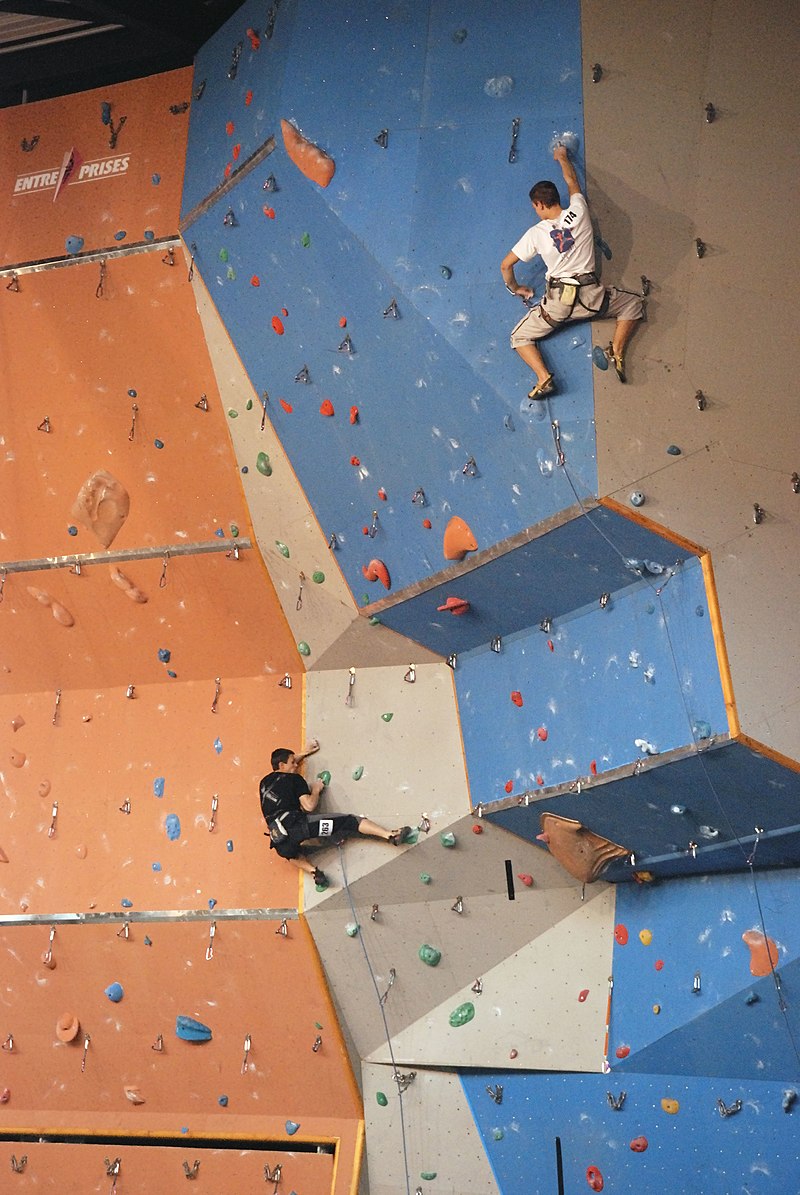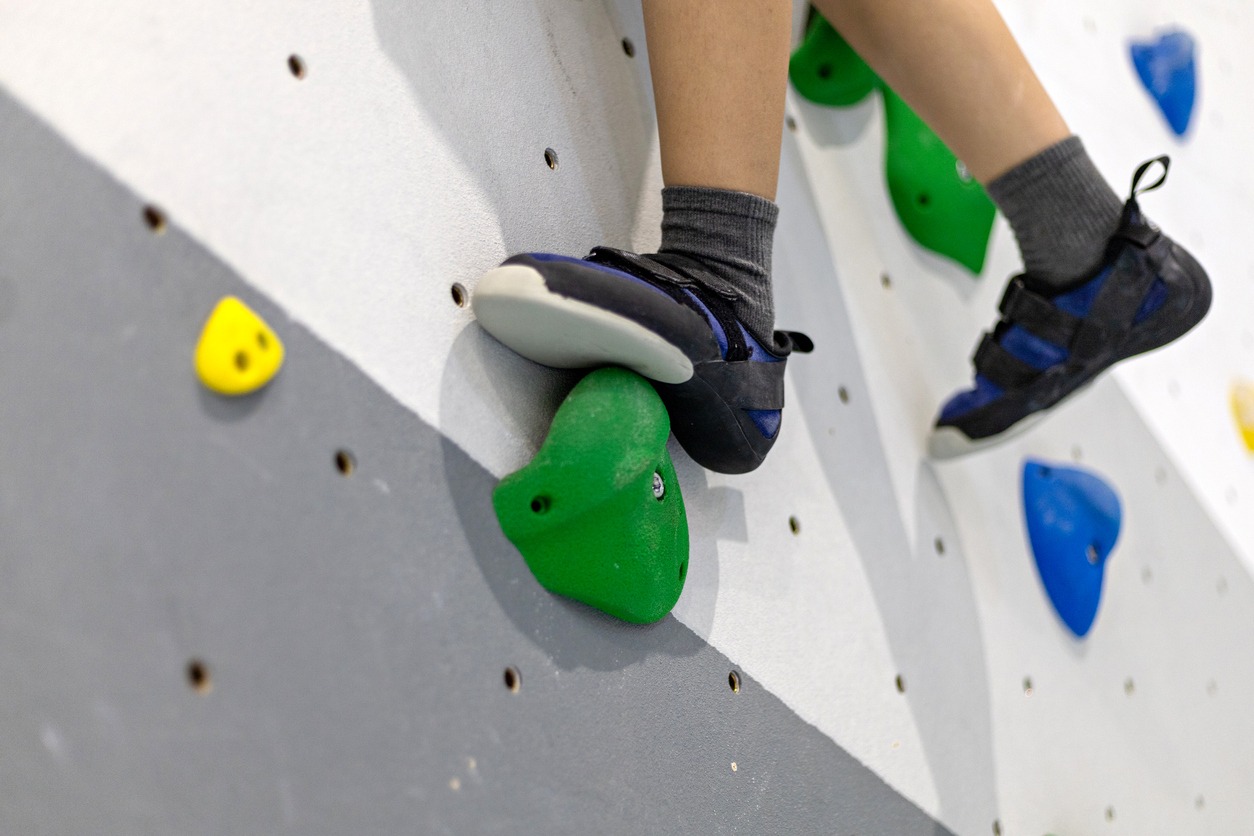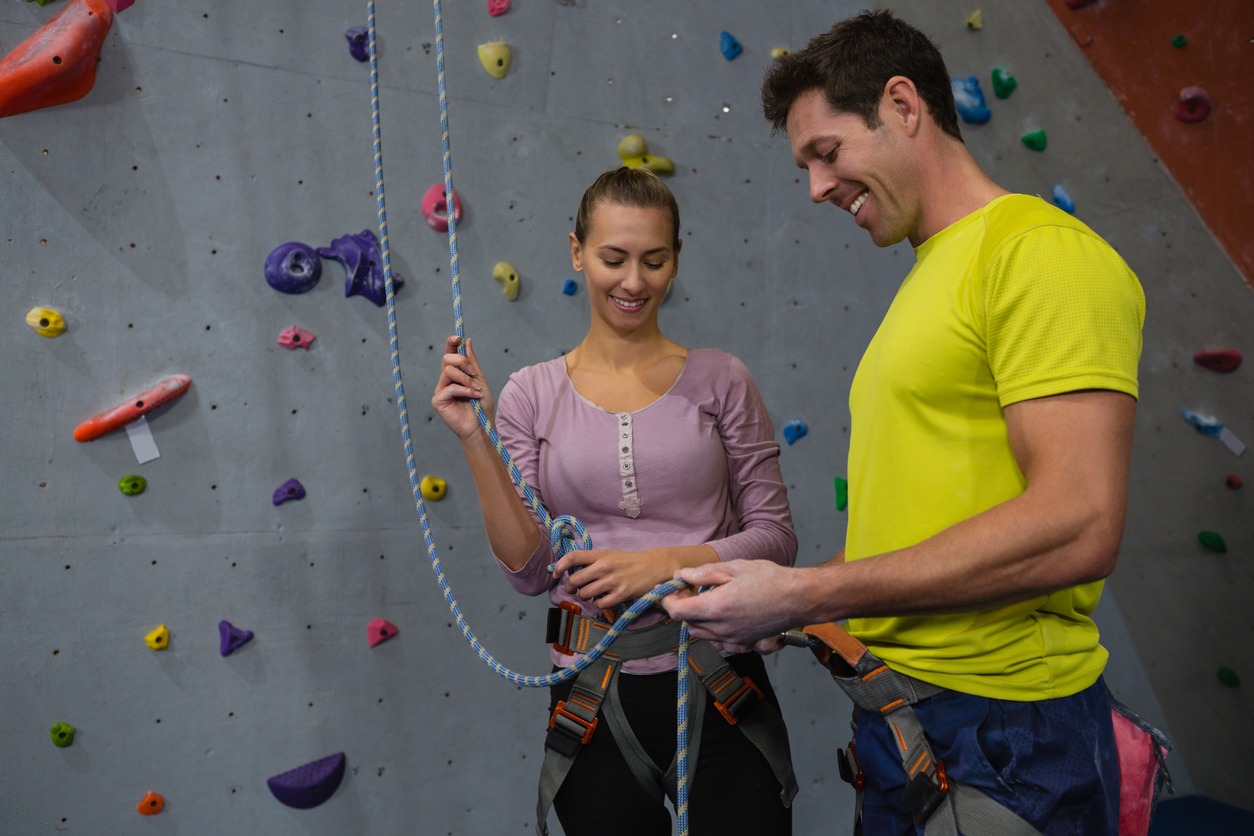Climbing, in its many forms, has a rich history. From the awe-inspiring summits of natural mountains to the controlled environments of indoor gyms, the sport has evolved significantly over the years. The concept of indoor climbing is relatively new, but it has taken the world by storm as a safer and more accessible alternative.
The growth of indoor climbing has been further fueled by celebrity endorsements and the power of social media. Celebrities like Chris Sharma and Alex Honnold have played a pivotal role in showcasing the sport’s allure, while platforms like Instagram and YouTube have allowed climbers to share their incredible feats, attracting newcomers by the thousands.
This exhilarating sport combines physical challenges with mental stimulation, and in the following discussion, we will explore its soaring appeal, offering valuable advice for beginners while underscoring the paramount importance of safety measures.
Types of Indoor Climbing
If you’re new to the world of indoor climbing, you might be surprised to learn that there are several types of indoor climbing to explore. Let’s break down the most common types of indoor climbing, making it easier for you to choose the one that suits your interests and fitness level.
- Bouldering is a beginner-friendly form of climbing that takes place on shorter walls, usually around 20 feet tall, without the need for ropes or harnesses. Instead, climbers use crash pads for safety. This type of climbing is all about tackling challenging “problems” that are essentially puzzles requiring problem-solving skills, strength, and technique. Bouldering is known for its social aspect, where climbers often gather to work on the same problems together, making it a communal experience. Plus, it’s cost-effective, as all you need are climbing shoes and chalk. It’s the purest form of climbing, offering the freedom of movement without the encumbrance of ropes or belayers, making it an excellent starting point for beginners.
- Top-roping, involves climbers securely attached to a rope running through an anchor at the top of the wall and down to a belayer on the ground. This method allows climbers to tackle taller walls, ranging from 20 to 60 feet, knowing they have the safety net of the rope if they fall. The rope is connected to the climber’s harness with a figure-8 knot and to the belayer via a belay device. Top-roping is considered one of the safest forms of climbing, with falls typically just a few inches. It’s essential to have a partner who knows how to belay, but some gyms offer classes to learn this skill. As you progress, you and your partner can switch roles. Climbing difficulty is measured using the Yosemite Decimal System (YDS), where 5.0 is easy, and 5.15 is hard, so pay attention to the decimal point number when choosing your route.
- Lead climbing is an advanced form of climbing, not recommended for beginners. In lead climbing, the climber attaches the rope to protection points on the wall as they ascend, unlike top-roping where the rope is anchored at the top. This method involves more skill and endurance as climbers must clip into quickdraws while climbing, with a higher risk of longer falls, often up to 10 feet. However, when done correctly, you should not hit the ground. A partner, or belayer, is essential in lead climbing to catch falls, making it a dynamic and challenging style to push your limits.
- Speed climbing is an exciting and competitive discipline in both indoor and outdoor climbing, focusing on racing up a standardized climbing route. Climbers participating in speed climbing must memorize the specific layout of the walls to improve their times, making it a thrilling experience for those seeking a competitive edge in climbing.
- Auto-belay climbing offers solo climbers a chance to ascend walls without needing a partner. This climbing option involves using an auto-belay device that automatically manages the climbing rope’s slack as you ascend and gently lowers you during descent, mimicking the experience of having a belay partner. It’s a suitable choice for those who prefer solo climbing or lack a climbing partner, providing a controlled descent without relying on someone else to belay you. However, it’s important to note that auto-belays are typically found in indoor climbing facilities and not used in outdoor climbing settings.
Getting to Know Climbing Equipment
When starting your climbing journey, understanding the essential equipment is vital. You’ll begin by renting a harness, climbing shoes, and possibly a chalk bag.
The harness resembles a pair of pants with waist and leg loops; wear it by stepping into the leg loops and tightening the waist strap, ensuring the front loop is for the belay attachment, and it sits just above your hips. Climbing shoes may feel snug, like they’re half a size small, but this tight fit enhances sensitivity to the wall and grip on holds. You can wear socks initially, but they are usually worn without socks later on. Chalk is your ally, as it dries your hands and improves grip. Use it sparingly, with a thin layer on your hands. Rental gear is typically available and recommended for beginners. Climbing shoes with specialized rubber are especially helpful, and while chalk is beneficial, avoid it initially to prevent skin injuries; use it as your skin toughens over time.
So, embrace the provided equipment, as sneakers won’t provide the same advantages as climbing shoes, and embark on your climbing adventure with confidence!
Essential Tips for a Safe and Thrilling Adventure
Rock climbing is an exhilarating sport that anyone can enjoy, and these simple tips will help you get started safely and confidently.
1. Rely on the Climbing Ropes
It’s perfectly normal to have some initial apprehension about climbing ropes. However, these ropes are meticulously designed with your safety in mind. Most indoor climbing gyms utilize a top rope system, which is engineered to make falling nearly impossible when used correctly. To build your trust in this system, you can take a small step of faith by climbing a short distance up the wall and then letting go. This will allow you to experience firsthand how the rope gently catches you, ultimately boosting your confidence in its reliability. It’s important to note that climbing ropes are extensively tested and proven to be highly secure, providing peace of mind to climbers of all levels.
2. Grasp the Role of Belaying
As you progress in climbing and venture onto higher walls, you’ll encounter the important role of a belayer. The belayer serves as your climbing partner, responsible for managing the rope’s slack and ensuring your safety throughout your ascent. Their vigilance is crucial in preventing you from falling too far in case of a misstep. Trusting your belayer wholeheartedly is a cornerstone of climbing safety. Effective communication between you and your belayer is vital to coordinate actions and intentions, especially in the sometimes-noisy environment of a climbing gym.
3. Explore the Auto-Belay Option
For newcomers to climbing who may be uncertain about belaying, many climbing gyms offer an alternative solution – auto-belay devices. These automatic systems are securely anchored at the top of the climbing wall. They function by retracting the rope as you ascend and gently lowering you to the ground when you begin your descent. The advantage of using auto-belays is that they eliminate the need for a human belayer, allowing you to concentrate exclusively on your climbing without concerns about partner-related safety. Auto-belays are designed to provide a reliable and stress-free climbing experience.
4. Learn Climbing Commands
Climbing involves a unique set of commands that facilitate safety and coordination between the climber and belayer. These and other commands are essential for clear and effective communication during your climb, especially when climbing in a busy and potentially noisy gym environment.
5. Hone Your Climbing Technique
Climbing isn’t solely about upper body strength; your legs are your secret weapon. Effective climbing technique emphasizes utilizing your legs to bear the brunt of your body weight, thus relieving your arms. Maintaining extended arms, rather than constantly bending your elbows, conserves your muscle strength and overall energy. With practice and experience, you’ll discover that focusing on your footwork and leg movements is the key to efficient and less physically taxing climbs.
6. Prepare for Forearm Fatigue
Climbing often leads to a sensation known as “pump” or forearm fatigue. This is the result of intense muscle engagement in your forearms and hands. It’s important to anticipate some soreness, especially when you’re new to climbing. This discomfort is a natural response as your muscles adapt to the new demands of climbing. Over time, with regular climbing sessions, ideally twice a week, you’ll not only build strength but also increase your endurance. Your body will adjust, and you’ll notice significant improvements in your climbing performance.
7. Climb at Your Own Pace
The beauty of climbing lies in its adaptability to your personal preferences. Once you’ve mastered the fundamental techniques and safety measures, you’ll gain the independence to climb at your own pace. Whether you choose to climb with a friend or opt for the gym’s partner-matching service, you’ll find that climbing offers a unique blend of challenge and personal growth. With experience and practice, you’ll become increasingly confident and proficient, eventually feeling as at ease in the climbing gym as a seasoned pro. Climbing allows you to set your own climbing journey and enjoy this sport on your terms.
Respectful Gym Etiquette
Climbing gym etiquette is the cornerstone of a harmonious climbing environment. While there are various guidelines, here are six key etiquette points that will enhance your climbing experience:
- Route Respect: Climbing routes in gyms can be scarce, especially during peak hours. It’s important to recognize that others are eager to climb as well. Once you’ve completed a route or boulder problem, practice route respect by stepping aside promptly. Additionally, if you’re uncertain about which route to attempt, consider stepping back to signal that the route is available for others. This simple act of courtesy ensures a fair and enjoyable experience for all climbers.
- Offer Advice Mindfully: While climbing can be a collaborative sport, not everyone welcomes unsolicited advice. This principle, known as “spewing beta,” emphasizes the importance of offering guidance mindfully. Instead of immediately sharing tips, take a moment to gauge whether the climber desires assistance. Asking if someone wants advice before providing it demonstrates respect for their autonomy and can lead to more positive interactions at the gym.
- Spotting Courtesy: Spotting is a crucial safety practice in climbing, but it should be approached with care. Always be prepared to spot fellow climbers, especially when they attempt challenging moves or are at heights. However, it’s essential to ask for their permission before physically touching or assisting them. This ensures that spotting is done respectfully and in accordance with the climber’s preferences.
- Considerate Projecting: Projecting or spending an extended time on a climbing route is common, especially when tackling difficult or challenging sequences. However, it’s important to be considerate of others who may also wish to attempt the same route. If you find yourself projecting, be aware of fellow climbers and their interests. If someone else wants to climb the route, consider lowering and returning to it later. This approach maintains a sense of fairness and inclusivity in the climbing community.
- Supervise Kids: Climbing gyms often welcome young climbers, making it important for parents to supervise their children attentively. Ensure your kids are following safety guidelines, such as using proper equipment and staying clear of fall zones. Encourage them to share routes with other climbers and teach them the importance of good sportsmanship and respect for fellow gym-goers.
- The Fall Zone: Climbing involves inherent risks, and understanding the fall zone is critical for safety. Never climb or walk within the fall zone of other climbers. This zone extends beneath a climber who could potentially fall. Being aware of this space and avoiding it prevents accidents and ensures a safer climbing environment for everyone.
Conclusion
Indoor climbing and bouldering have ignited the passion of countless adventurers and fitness enthusiasts. With a focus on safety, inclusivity, and respect for the environment, this exhilarating sport welcomes all who seek the thrill of reaching new heights. Whether you’re a beginner embarking on your climbing journey or an experienced climber in search of new challenges, indoor climbing offers an adventure unlike any other. Strap on your climbing shoes, chalk up, and prepare to experience the heart-pounding thrill of indoor climbing – an adventure that awaits you just around the corner.





